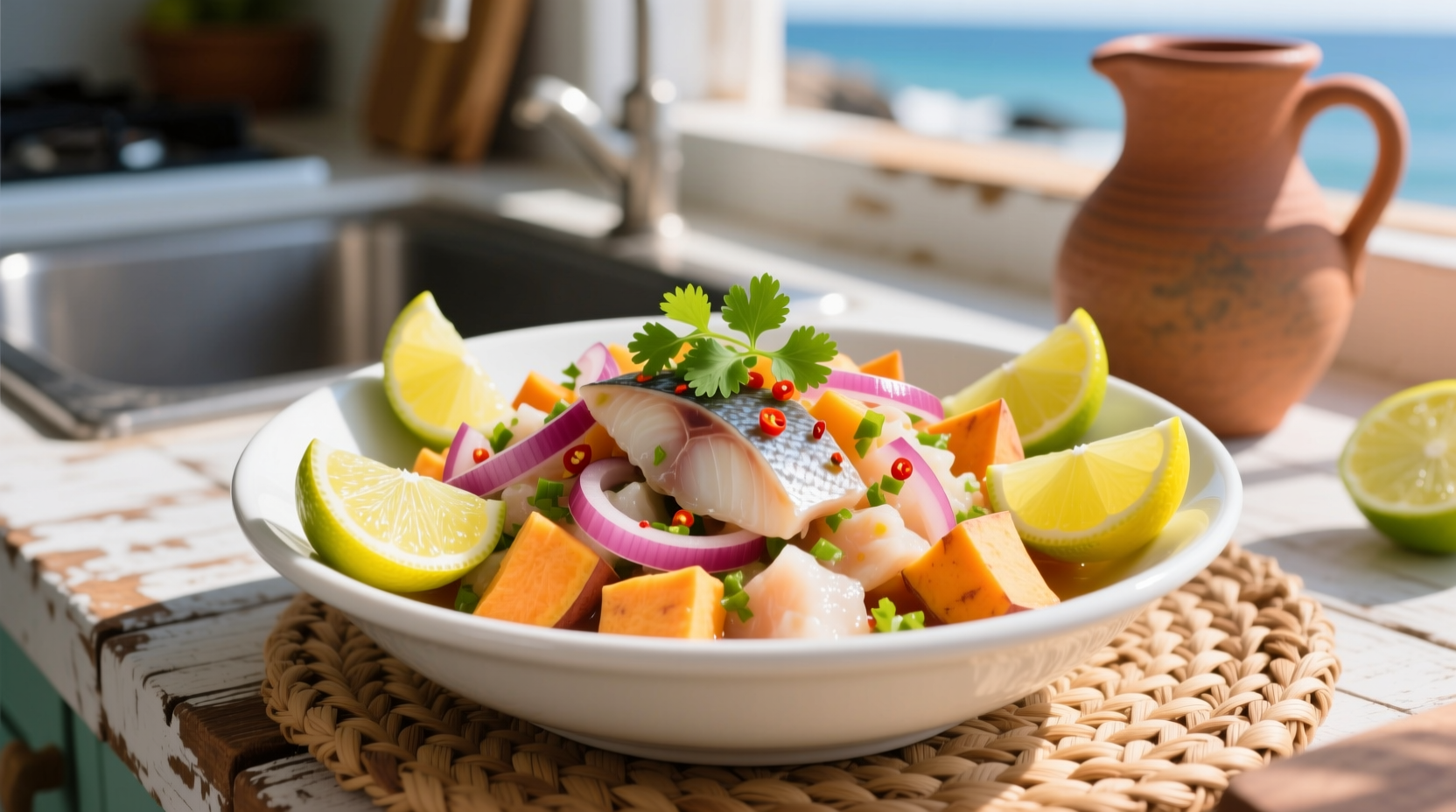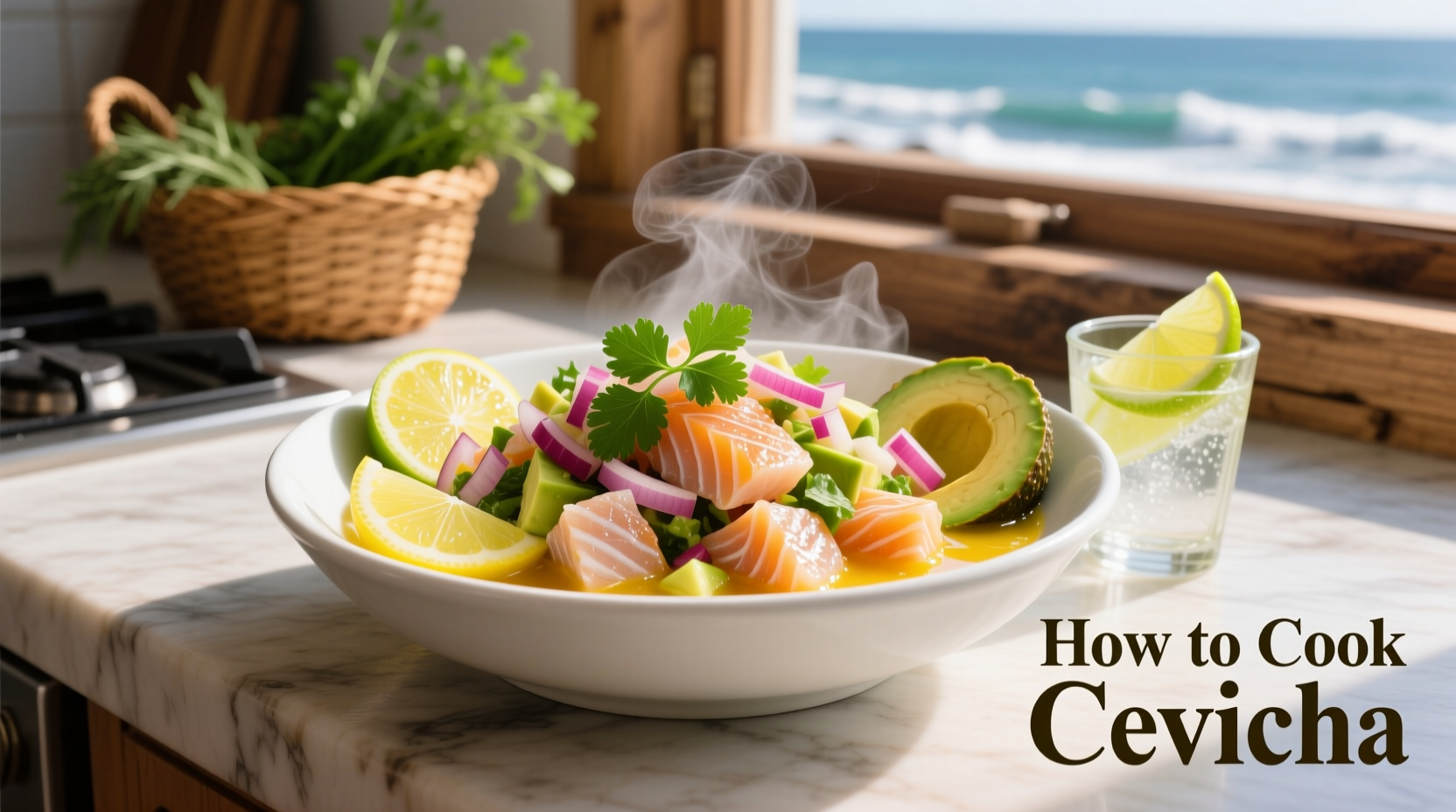The Essential Ceviche Foundation
Creating perfect ceviche starts with understanding its scientific principle: citrus acid denatures fish proteins, mimicking thermal cooking. Unlike heat-based methods, this 'cooking' occurs at precise temperatures (40°F/4°C or below) with exact timing based on fish thickness. The traditional Peruvian version uses leche de tigre (tiger's milk) – the citrus marinade that becomes infused with fish essence during curing.
Fish Selection: Your Safety First Step
Only use sushi-grade fish frozen to -4°F (-20°C) for 7 days or -31°F (-35°C) for 15 hours to eliminate parasites, per FDA guidelines. Freshness indicators include:
- Clear, bulging eyes (for whole fish)
- Bright red gills without slime
- Firm texture that springs back when pressed
- Sweet ocean smell (never fishy or ammonia-like)
Best fish options: sea bass, flounder, snapper, or halibut. Avoid oily fish like mackerel that overpower ceviche's delicate balance. The FDA's Fish and Fishery Products Hazards manual confirms proper freezing eliminates 99% of parasite risks in raw preparations.
| Fish Type | Thickness | Curing Time | Texture Result |
|---|---|---|---|
| Thin cuts (1/4") | 1/4 inch | 8-10 minutes | Translucent, tender |
| Medium cuts (1/2") | 1/2 inch | 12-15 minutes | Opaque edges, translucent center |
| Thick cuts (3/4"+) | 3/4 inch+ | 15-20 minutes | Fully opaque, firm |
Authentic Preparation Timeline
Ceviche's evolution spans centuries, from ancient Moche civilization fish preservation techniques to modern Peruvian national dish status. The critical preparation stages follow a precise sequence:
- Prep (5 min): Dice 1 lb sushi-grade fish into 1/2" cubes. Chill all ingredients and serving plates.
- Acid Bath (12 min): Submerge fish in 1 cup freshly squeezed key lime juice (not Persian limes). Add 1 diced red onion, 1 minced ají amarillo pepper.
- Resting (3 min): Remove fish after citrus turns opaque at edges. Drain excess juice.
- Finishing (2 min): Gently fold in 1 diced tomato, 2 tbsp chopped cilantro, 1 diced sweet potato (pre-cooked).

Critical Technique Mistakes to Avoid
Even experienced cooks fail at ceviche by misunderstanding these key factors:
- Over-curing: Leaving fish in citrus beyond 20 minutes creates tough, dry texture as acid continues breaking down proteins
- Temperature neglect: Room temperature preparation risks bacterial growth; keep everything chilled until serving
- Ingredient timing: Adding tomatoes/cilantro too early causes sogginess; fold in during final resting phase
- Lime substitution: Persian limes lack the floral notes of key limes essential to authentic flavor profile
Regional Variations Guide
While Peruvian ceviche reigns authentic, these regional adaptations offer creative alternatives when prepared with cultural respect:
- Peruvian classic: Fish + key lime + red onion + ají amarillo + sweet potato + corn
- Mexican style: Add orange juice to lime, include avocado, serve with tostadas
- Ecuadorian version: Coconut milk infusion, tomato-based leche de tigre, often with shrimp
- Modern fusion: Mango or passion fruit additions, cucumber ribbons, micro cilantro garnish
Serving Protocol for Perfect Results
Ceviche's delicate balance requires proper presentation:
- Serve immediately after final preparation – never refrigerate completed dish
- Use chilled ceramic or stone plates (metal affects flavor)
- Traditional accompaniments: cancha (toasted corn), boiled sweet potato, choclo (Peruvian corn)
- Pair with crisp Pisco sour or dry white wine like Albariño
Remember that ceviche continues 'cooking' even after preparation. The ideal texture shows opaque edges with a translucent center – over-cured ceviche becomes chalky and loses its delicate mouthfeel. When executed properly, this ancient preservation technique delivers one of the world's most refreshing seafood experiences.











 浙公网安备
33010002000092号
浙公网安备
33010002000092号 浙B2-20120091-4
浙B2-20120091-4